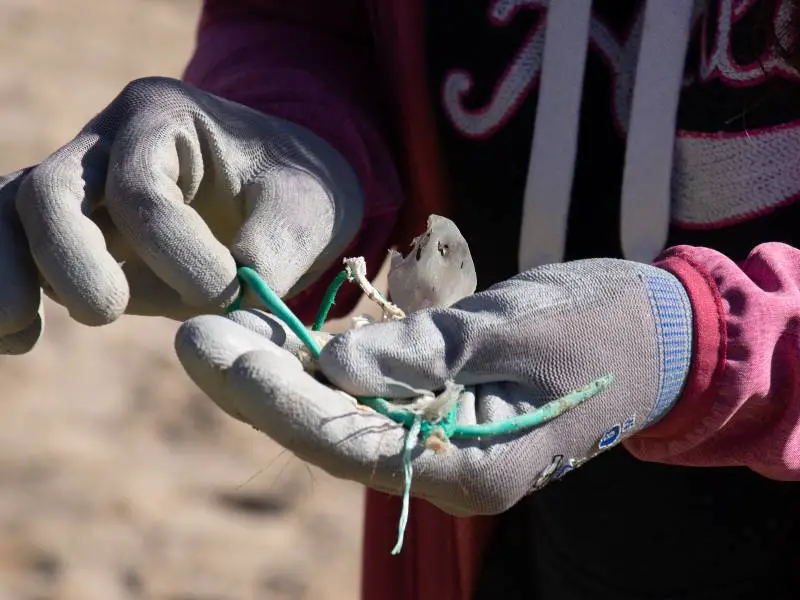Every year, plastic manufacturers produce hundreds of metric tons worth of plastic destined for both industrial uses and our own consumption. These long-lasting and chemically resistant materials, often utilized in our day-to-day lives, come in many forms.
Even though recycling is more popular than ever, polyethylene terephthalate (PET) plastics are the go-to items for different aspects of our lives. But because most of these plastics are one-time use only, the impact of these on the environment is very unsustainable.
Recently, a discovery showed attractive potential for eliminating the plastic problem. In this article, we’ll look into how plastic-eating bacteria could help alleviate the plastic problem, and the future to hold unto.

The Plastic Problem
The problem with plastic is that it does a perfect job of what it was originally designed. It’s relatively cheap, easy to make, and therefore, can be used for low-value items such as packaging and storage.
Since its invention in 1846, humans have thrown away more than 8 billion metric tonnes of plastic into the ocean and all ecosystems. But plastic pollution is going beyond the water’s edge.
Microplastics have accumulated in the guts of plankton and fish, and scientists have found that microbes also eat them.
To illustrate the dire problem, picture this: around 8 million tons of plastic garbage escape from coastal countries yearly. That is akin to placing five garbage bags full of rubbish on every foot of the world’s shoreline!
The Most Common Type of Plastic
Polyethylene terephthalate, or PET, is the most used type of plastic. That means everything, from water bottles, toys, and packaging, to massive machines uses a certain amount of PET. When used for garments, and about 60% of all clothes, it’s known as polyester.
PET, developed in the 1940s in the United States, is 100% recyclable, but as we all know, not all plastics are recycled. Europeans are the largest recyclers in the world, but they only recycle 50% of their plastics. So where does the half go? Straight to landfills.

The Discovery of Plastic Eating Bacteria
The first discovery of plastic eating bacteria happened when scientists in Japan collected sludge from outside a bottle factory and discovered a noticeable degradation caused by a new type of bacteria.
The bacterium, named Ideonella sakaiensis proved to be capable to degrade PET, using it as an energy source and then turning it into a mineralized form of Carbon Dioxide.
However, the bacteria functioned slowly, requiring around six weeks to degrade plastic. This meant it was not a very marketable alternative, especially because new items utilizing PET and other plastics could be made quickly and inexpensively. The bacteria’s finding was interesting, but they can’t solve the plastic problem in its current form.
Through extensive research and various advances, scientists have worked towards “advancing” the bacteria to degrade plastic in a faster way.
How Do the Plastic Eating Bacteria Work?
PETases enable microorganisms to break down plastic bottles and other similar materials.
This bacteria produces MHETase, which breakdowns the composition of the plastic. Upon breaking down, these enzymes unite to form a “super enzyme.” After this step, these compounds can turn the products into C02 and water.

Unknown and Possibly Consequential Effects of Plastic Eating Bacteria
First, it is unknown if these enzymes are safe for broad usage in environmental cleanup.
The widespread use of direct enzyme spraying – or bacteria bred to release environmentally active enzymes – in the water poses a slew of unknown risks. These large-scale operations have a long history of causing unnoticed adverse effects, so it would be better to proceed cautiously at first.
Second, the broken-down plastic monomers must be separated from the other materials in the mix. This takes longer and costs more to break down plastics, which makes the process less profitable in the long run.
Tackling the Plastic Problem Directly to the Source
Therefore, the first order of business must be to lessen our dependence on throw-away plastics and work toward improving waste management on a worldwide scale.
After we have eliminated the primary cause of the issue, we will be in a position to consider how to directly treat the residual plastic pollution collected in the ocean gyres and on the ocean floor. Until then, we still have a lot of work and innovations to make.
Hope for a Better Future
In a society where consumerism is based on plastics, new technologies and discoveries like the plastic eating bacteria offer us the possibility to regulate the garbage we generate.
While we may not be able to break free from relying on plastics for a long time and switch from petroleum-based plastics to something more sustainable, plastic eating bacteria might help alleviate some of the stress caused by the overload of waste.
Plastic eating bacteria and enzymes may play a key role in repairing some of the environmental harm caused by plastic pollution. But it is critical to responsibly manage the amount of plastics we use, so we can reduce the total plastic pollution.

Final Thoughts
Plastic pollution is a huge problem, and scientists are now looking for ways to reduce it. There is now an alarming problem where microplastics are causing havoc in the oceans and waterways, as well as in the human food chain. Microplastics are causing toxic problems in the oceans and waterways by contaminating marine life.
These plastic particles also collect in fish, shellfish, and in vegetables that we all eat. Recent studies show that microplastics collected from 10 ocean locations, including the Mediterranean Sea, had more than 5,000 different types of plastic particles. These microplastic particles have been collected both at the surface and at depths of 6,000 feet below the surface.
Some scientists suggest using bacteria to destroy plastic particles in the oceans. Microorganisms, such as bacteria, are very powerful and can behave like little factories, producing various chemicals for consumption. Scientists believe that if microplastic particles were consumed by bacteria, these microbes would release chemicals that degrade the plastic particles into harmless carbon dioxide and water.
Microplastics are a serious threat to the planet. We need to do something about it. Perhaps we should start utilizing plastic-eating bacteria?
Related: Plastic Pollution, Plastic Water Bottle Alternatives, Compostable Bags

